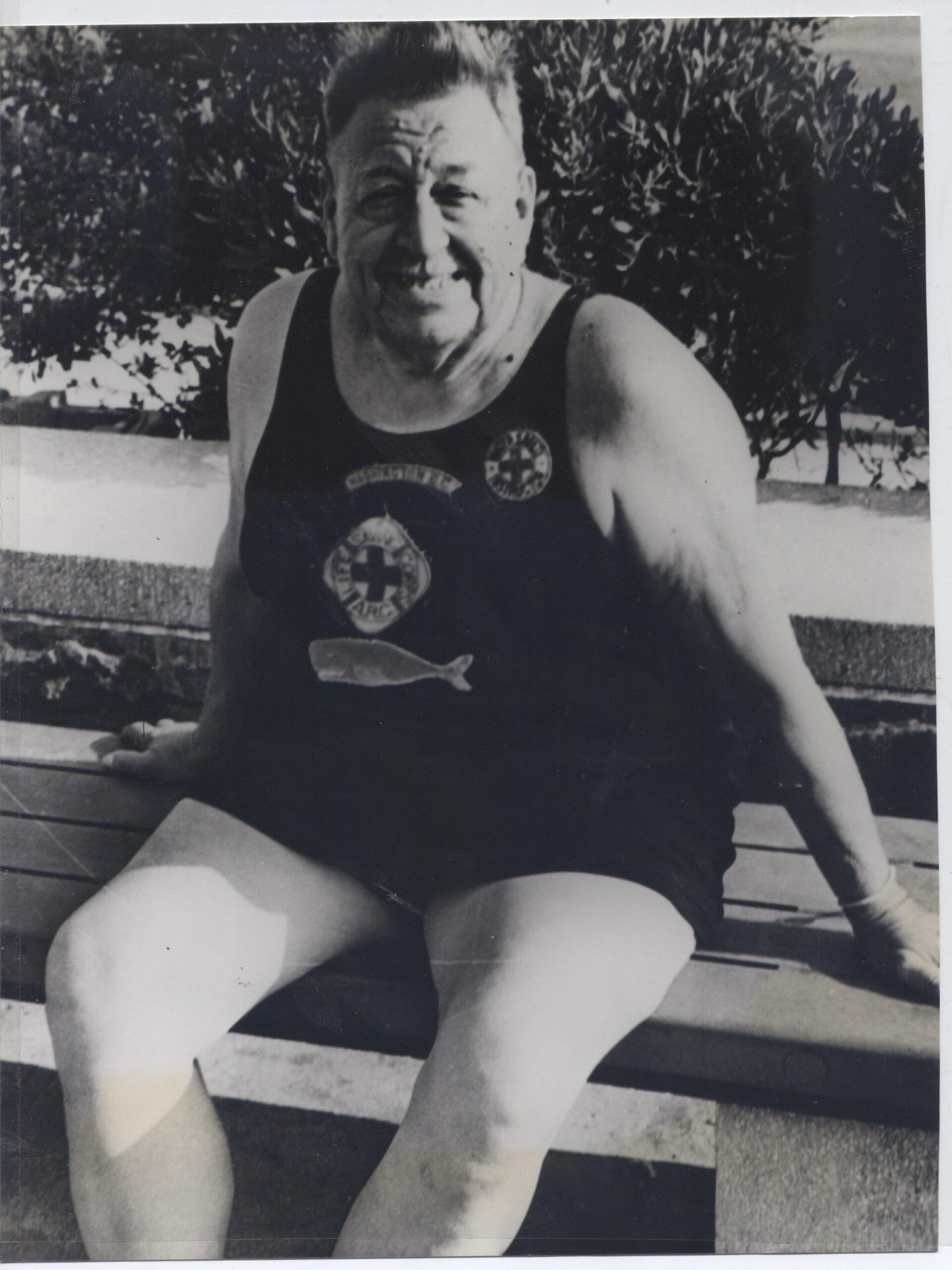
Commodore Wilbert E. Longfellow (USA)
Honor Contributor (1965)
FOR THE RECORD: As a young man in Rhode Island joined the Volunteer Life Saving Corps, giving demonstrations on life-saving skills; Convinced the Rhode Island Legislature to appropriate funds for life saving equipment for the beaches and for more demonstrations; In 1914 founded the Red Cross water safety education program and the Red Cross Life Saving Corps to promote the program nationally; Traveled to communities with his aquatic pageants, teaching and entertaining large crowds; recruited the skilled swimmers in these communities and trained them in rescue and resuscitation, organizing them into a volunteer life saving corps.
More than to any other one man elected to the Swimming Hall of Fame, the aquatic-minded people of this aquatic-minded land owe a debt of gratitude to the late Commodore Wilbert E. Longfellow. The Commodore was among the first to see, some 60 years ago, that the rapidly mounting toll of death from drowning, unless soon curbed, would assume the proportions of a national tragedy. He saw the need for a nationwide program of swimming and lifesaving instruction.
There will be 60% fewer people in your state drowning this year because of the water safety education work he began. He coined the phrase, waterproofing American, and he showed us the most effective way to do it through the perfect combination of entertainment and teaching.
Longfellow carried his message “Every American a swimmer, every swimmer a life saver”, to millions across the country for almost half a century. The effectiveness of his work is judged by a drop in the drowning death rate in the U. S. from 102 per 100,000 population in 1910 to 3.4 per 100,000 population by 1962. Longfellow earned the first Red Cross life saving certificate and bathing suit emblem in 1914, which since then, has identified over a million Red Cross-trained instructors who have taught Red Cross water safety courses to 25 million Americans. A giant of a man with a booming voice and boundless energy, Longfellow began his campaign for water safety while a young reporter in Providence, Rhode Island. He joined the Volunteer Life Saving Corps and, in addition to patrolling the beaches, gave demonstrations on life-saving skills.
As a reporter covering the State House, he convinced the Rhode Island Legislature to appropriate funds to buy life saving equipment for the beaches and to finance more demonstrations. Within a few years his work had been instrumental in cutting the state’s drowning rate by 50% and he set about to find ways to expand the water safety activity nationally.
The search took him to the American Red Cross, which at that time was conducting a national first aid program. The Red Cross liked his idea of first aid in the water and hired him in 1914 to head a water safety education program. His first step in his new job was to set up a Red Cross Life Saving Corps and to promote it nationally. He traveled from one community to another attracting large crowds to his aquatic pageants where he taught and entertained them. He also recruited the skilled swimmers in each place, trained them in rescue and resuscitation and organized them into a volunteer life saving corps that would carry on the work.
